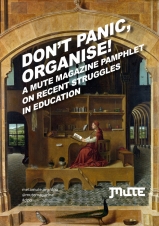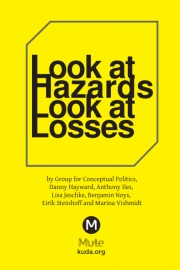Let’s learn how to read and write again.
Disclaimer: This blog is written by someone who lacks any digital knowledge. Bumping into inaccurate use of terms is a risk you take by reading this blog and I hereby give you the responsibility of pointing out these errors. (But gently please)
Reading equals writing?
You are reading this blog I have written. Which means we both know how to read and to write. The way you read my text is probably influenced by its context, the platform it is posted on. Despite the influence this has on my own text, I can not do anything about it, since the software underlying this platform is written in code. And coding is a way of writing I do not know. So because of this platform am forced to read I language I can not write in, but which has major influence on the perception of my text. If you do know how to write code, you have opportunities to change my text, I -the ‘text-owner’- lack. I am not even sure you will read the same context as I did, given the fact that the programmer behind this website can change the entire thing whenever he wants. “The average user doesn’t write code. […] If their needs are met, they don’t especially care how they were met.” [Galloway: 187]
Both the old and the new way of writing and reading exist out of multiple layers; you won’t read the actual code, but only the format, software or whatever it created. However: you will not read a text as a plain gathering of symbols either, but as a union build out of layers, in that way creating meaning. Due to our lack of knowledge of digital writing and reading, most of us are not able to recognize all these layers in formats, and can be misled quite easily.
So we have two ways of reading and writing, both used to express certain ideas, or at least created to be read and produce some effects. Big difference is that in the ‘normal/old’ way of writing and reading the both are inseparably linked and are taught at school, while the ‘new’ way of reading and writing are not.
Reading equals serving?
With the rapid increase of digital reading, it is important to think about the way platforms, formats and software we use daily and intensively, influence us. Like Jonathan Zittrain says in The future of the Internet. And How to Stop It. “In this view, the software we use shapes and channels our online behavior as surely as—or even more surely and subtly than—law itself.”
Lovink and Rossiter talk about a new way of power analysis: working out who defines and manages the technological standards. “Whoever sets the standard has the power.” Without being able to understand all the layers of digital text, one never knows which goals you unintentional serve. Privacy for an example: what happens with your data after you have agreed on the terms. Ted Stiphad describes in The Abuses of Literacy: Amazon Kindle and the Right to Read how Amazone uses all the data users create by making dog-ears for their commercial goals.
Reading equals revolution
Digital reading does not only exist of dangers, it is above all full of possibilities and advantages. As Allen Lau states: “For the first time in human history, writers can reach out to millions of people in other parts of the world that they could never have reached. […] That completely changes the dynamics, and the readers, in a way, are part of the content creation process, too.”
Click here to view the embedded video.
Text on paper has often played an important role in history, by creating or cranking up revolutions of all kinds. Digital text holds the promise of even bigger possibilities in this matter. It is for example easy to spread, it is free, it can be enriched with images or videos, to increase understanding, others can participate. “Involving readers, not merely as passive consumers, but as partners; and allowing digital products to freely circulate, creating a positive feedback loop (or ‘virtuous circle’) which in turn makes possible a new publishing experience.” [Ludovico: 150]
Reading equals writing. Soon
These advantages are in danger when governments and companies are able to interfere, by tracking down texts or their users/creators; by changing them from a distance; by save the data they create, destroy the texts, etcetera. Understanding of how things work is necessary to make people realize something is wrong. We have to create a world in which as many as possible know how to read and write the total text. In that way people know the powers they are dealing with and can choose if and how to use a particular format. Children’s lives nowadays are digitalized. One does not question daily life phenomena, so younger generations will just accept the way things are. That’s why intense lessons in these matters should be obligatory on primary and high school, given by unbound professionals, to be sure these lessons are objective and up-to-date. Not all kids have to become professional programmers, but at least they have to know the things they are dealing with.
Sources:
Galloway, A. ‘Protocol versus Institutionalization’, in Wendy Hui Kyong Chun and Thomas Keenan (eds) New Media, Old Media: A History and Theory Reader, London: Routledge, 2006, pp. 187-198.
Lovink, G. and Rossiter, N. ‘Seriality for All: The Role of Protocols and Standards in Critical Theory’, in Pieter Wisse (ed.) Interoperabel Nederland, The Hague: Forum Standaardisatie, 2011: 426-433.
Ludovico, A. ‘Post-Digital Print. The Mutation of Publishing since 1894′. Eindhoven: Onomatopee 77, 2012.
Markham, A. ‘Interaction in digital contexts: persistent characteristics’. 24-08-2012. http://www.markham.internetinquiry.org/
Striphas, T. ‘The Abuses of Literacy: Amazon Kindle and the Right to Read’, Communication and Critical/Cultural Studies 7.3 (2010): 297-317.
Webb, J. ‘The Internet has fundamentally changed reader/writer dynamics’ Interview with Allen Lau, at TOC. 01-03-2013.
Zittrain, J. ‘Tethered Devices, Software as Service, and Perfect Enforcement’, in The Future of the Internet – And How to Stop It, New Haven: Yale University Press, 2008, pp. 101-126
Mute Books Orders
For Mute Books distribution contact Anagram Books
contact@anagrambooks.com
For online purchases visit anagrambooks.com





